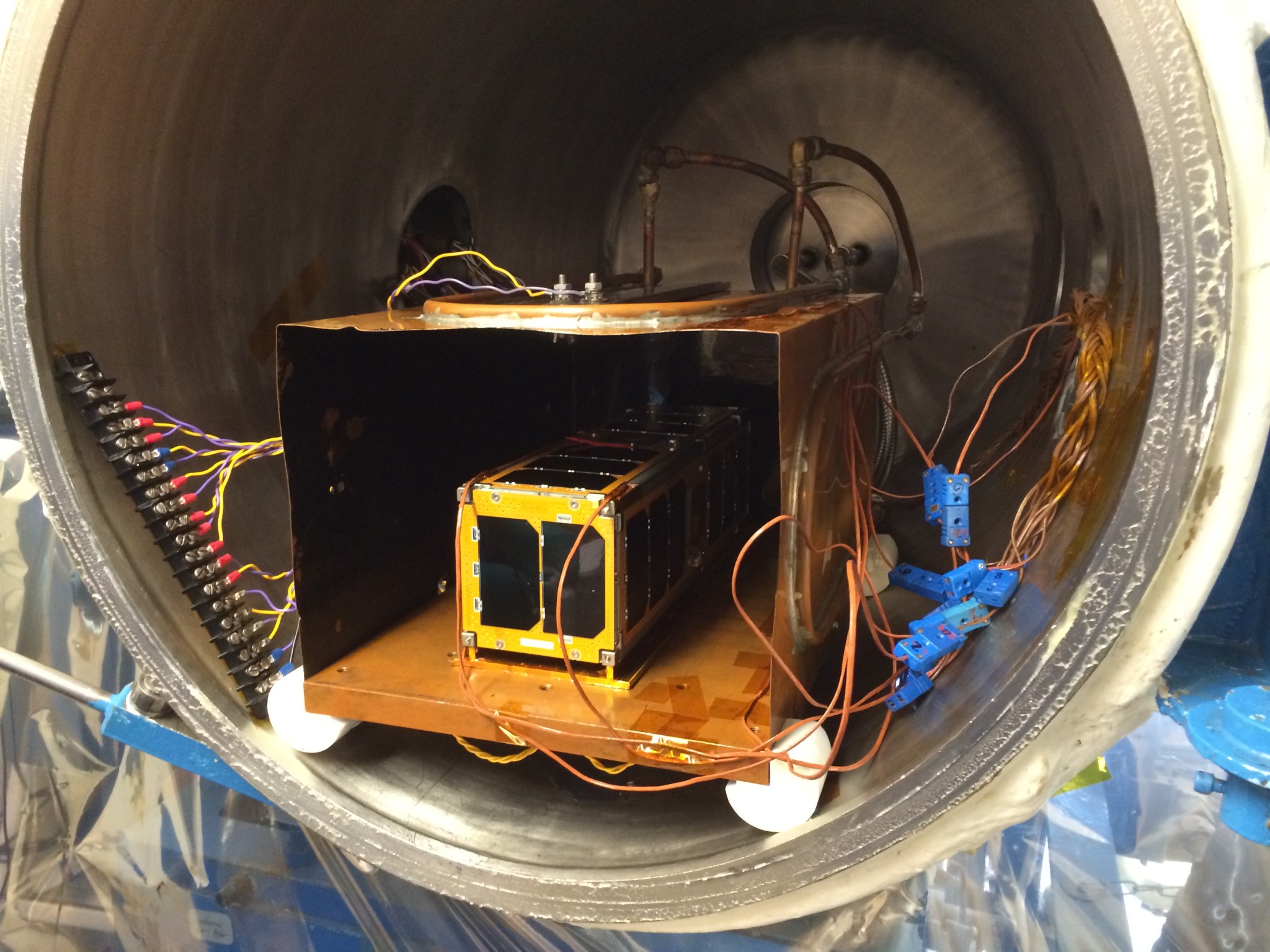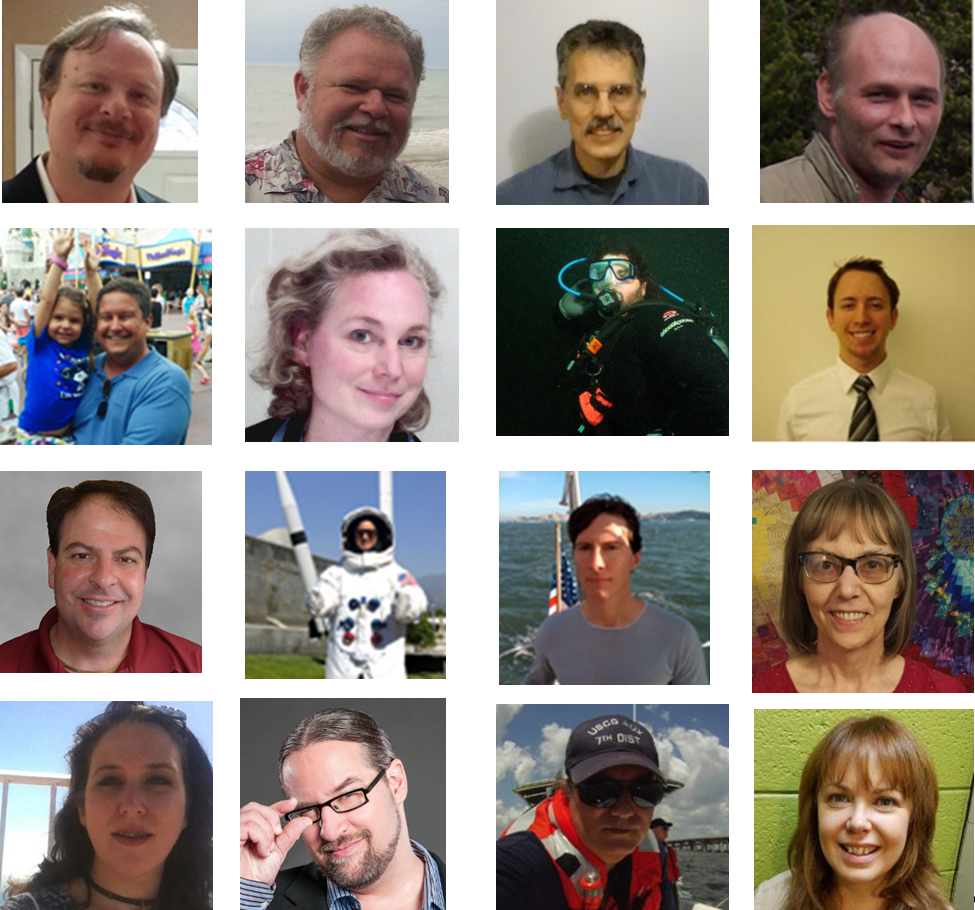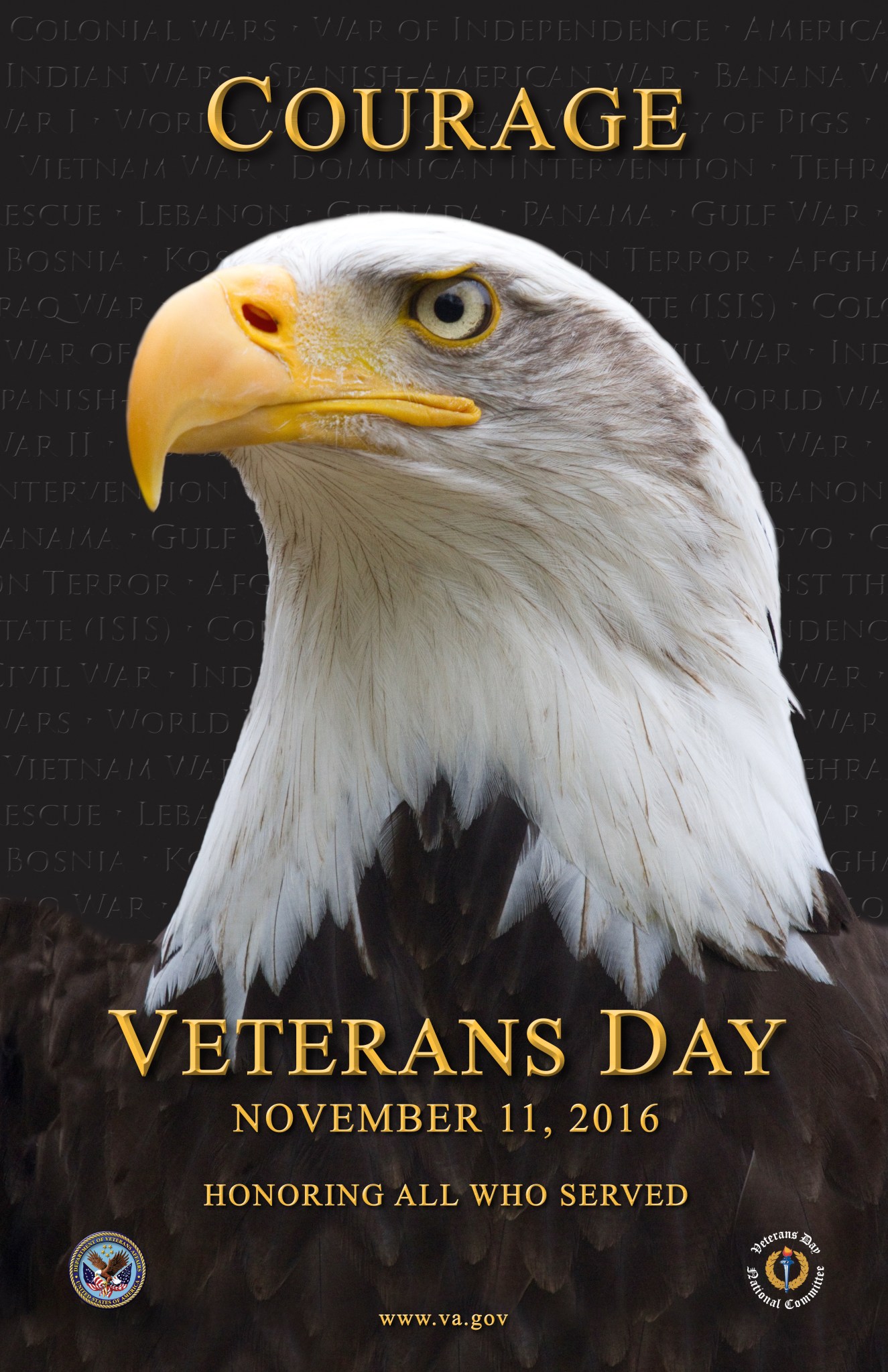In This Week’s Star
- Hardware Does a ‘Flip’ for First Flight of SLS Rocket
- Versatile Chemistry for the Red Planet
- NASA Awards $150,000 to Top 5 Teams in Third Round of Cube Quest Challenge
- Marshall Team Encouraged to Join Veterans Day Parade Marchers Nov. 11
- Marshall Celebrates NASA’s Agency Innovation Mission Day
- This Week in NASA History: STS-51A Launches to Deploy Two Satellites, Retrieve Two Others — Nov. 8, 1984
- Obituaries
Hardware Does a ‘Flip’ for First Flight of SLS Rocket
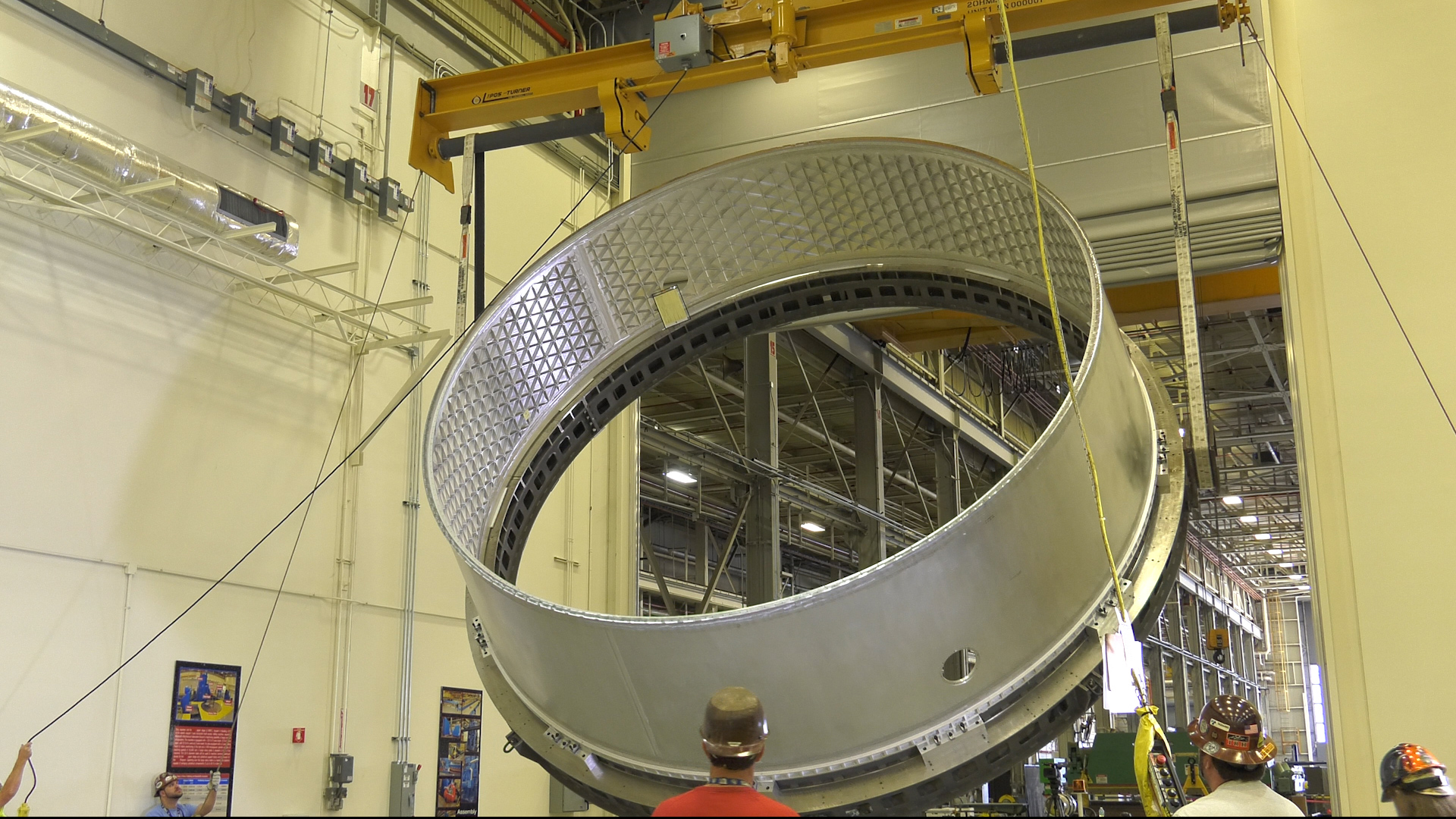
Engineers at NASA’s Marshall Space Flight Center recently flipped the flight Orion stage adapter, which will be an important piece of connector hardware for NASA’s new rocket, the Space Launch System. The adapter will join the Orion spacecraft to the rocket’s interim cryogenic propulsion stage — a liquid oxygen/liquid hydrogen-based system that will give Orion the in-space push needed to fly beyond the moon before it returns to Earth on the first flight of SLS in 2018. The adapter also will carry 13 CubeSats to perform science and technology investigations that will help pave the way for future human exploration in deep space, including the Journey to Mars. The flip is an important next step in evaluating the machining and drilling work on the flight hardware. (NASA/MSFC/Anthony Orton)
Versatile Chemistry for the Red Planet
By Bill Hubscher
When you need tools or parts for something you’re working on around the house, you head to the nearest hardware store. Space travelers don’t have that luxury and may have to make their own tools and parts on long-duration missions like the Journey to Mars. Scientists and engineers at NASA’s Marshall Space Flight Center are using data from International Space Station experiments to study liquids that may be used to help make valuable tools when exploring deep space.
For a decade, the Materials International Space Station Experiments, MISSE, were attached to the outside of the space station, where more than 4,000 materials were exposed to the harsh space environment. This included a special class of liquids, called ionic liquids, and a novel epoxy that scientists are studying to learn how these liquids tolerate the environment outside the orbiting laboratory. The members of this family of fluids have low melting points, and are not as flammable as many conventional chemicals. They also have extremely low vapor pressures, meaning they don’t easily evaporate and are easier to retain in the vacuum of space.
“Because of their unique chemistry, we can use ionic liquids to extract both metals and oxygen from lunar or Martian soil at about the same temperature you’d bake a cake,” said Laurel Karr, a materials scientist at Marshall. “The metals could then be used in a 3D printer for needed parts, and the oxygen could be used for life support or propulsion.”
Ionic liquids could be used as chemical drills to dissolve regolith on the surface of Mars, said Karr, thus extending the life of drill bits that future explorers, both human and robotic, would normally use to probe the Martian surface.
“We drill into the surface of a planet or asteroid to acquire samples for geological investigations,” said Karr. “With this fluid, we could bring up samples in a liquid form for chemical analyses right there on the drill site.”
NASA is interested in these ionic liquids not only for their many uses for exploration missions, but also because they are environmentally friendly chemicals. Metal extraction technology using the liquid could remove precious metals from ore without the environmental impact of some current methods used on Earth. For example, nickel is conventionally processed by smelting the material at 1,350 degrees Celsius and using sulfuric acid, which is impractical in an enclosed spacecraft due to the toxicity of the acid. Ionic liquid can remove nickel from a meteorite under 200 degrees Celsius.
Scientists are also testing ionic liquids as part of a life support method in space by extracting carbon dioxide from the air and breaking it down to create oxygen for breathing and methane for propulsion.
Many of the ionic liquids can even be filtered and recreated using electrolysis and hydrogen, making them useful, recyclable materials in space and on Earth.
As MISSE demonstrates, science takes time, and research results often keep paying off decades after experiment samples are returned to Earth. The MISSE project has made it possible to evaluate the performance, stability and long-term survivability of materials and components used by NASA, commercial companies and the U.S. Department of Defense.
Many spacecraft safely operating today have MISSE to thank for successful operations, because they are made of the most suitable materials for the space environment. The first Martian explorers may have MISSE to thank for innovative materials and processes that help them survive on the Red Planet.
To learn more about results from this space station investigation, including how these fluids could be used to repair spacecraft, click here.
Hubscher, an ASRC Federal/Analytical Services employee, supports the Office of Strategic Analysis & Communications.
NASA Awards $150,000 to Top 5 Teams in Third Round of Cube Quest Challenge
By Janet Sudnik
The small satellites competing in NASA’s Cube Quest Challenge are one step closer to the in-space portion of the competition, after teams competed in the third of four Ground Tournament checkpoints. Seven teams competed, and the top five were each awarded a prize of $30,000.
Cube Quest is a $5 million competition that challenges teams to design, build and deliver flight-qualified CubeSats capable of advanced functions near the moon and beyond. It is part of NASA’s Centennial Challenges program, which engages the public through competitions to solve challenges that will benefit the agency and the nation.
Cube Quest consists of a series of four Ground Tournaments, the in-space Lunar Derby and the Deep Space Derby. The Ground Tournaments serve as progress checks leading to an opportunity to be selected as one of three allocated slots on NASA’s Orion capsule’s first unmanned lunar flyby, Exploration Mission-1, planned for launch in 2018.
The Ground Tournaments are held and awarded every six months, as teams present test results, engineering data and analyses to a panel of judges for a chance to win intermediate awards.
The top five teams of Ground Tournament-3 are:
- Team Miles – Fluid & Reason, Tampa, Florida
(placed first in GT-1 and fifth in GT-2) - Cislunar Explorers – Cornell University, Ithaca, New York
(placed third in GT-1 and first in GT-2) - CU-E3 – University of Colorado, Boulder
(placed fourth in GT-2) - KitCube – Massachusetts Institute of Technology, Cambridge
(placed second in both GT-1 and GT-2) - SEDS Triteia – University of California, San Diego
(placed third in GT-2)
Teams were judged on their spacecraft and mission designs on point scale of 0 to 5, 5 awarded for exceeding expectations, and for highest likelihood of achievement of stated competition goals.
“We continue to be impressed as these teams refine and advance their technologies as we edge closer to the in-space phases of this challenge,” said Monsi Roman, program manager for Centennial Challenges, which is managed at NASA’s Marshall Space Flight Center. “They are forging new ways ahead that will lead to big advancements inside these tiny satellite explorers.”
After the final Ground Tournament takes place in early 2017, teams that qualified in the first two tournaments have the additional opportunity to be selected for EM-1. Winners will be announced at the completion of the fourth and final Ground Tournament in February 2017. The final three teams selected for flight on EM-1 must also pass a safety review.
New teams may still join the Cube Quest Challenge, but must compete in the fourth and final Ground Tournament to be eligible to participate in the in-space competitions. When all four of the Ground Tournaments are completed, the competition will progress to the in-space competitions. In the Deep Space Derby, teams must compete from a range of at least 4 million kilometers from Earth — more than 10 times the distance to the moon — while the Lunar Derby requires teams to achieve a lunar orbit where they will compete for communications and longevity achievements.
Sudnik, an ASRC Federal/Analytical Services employee, supports the Office of Strategic Analysis & Communications.
Marshall Team Encouraged to Join Veterans Day Parade Marchers Nov. 11
A group of NASA Marshall Space Flight Center team members is preparing for Huntsville’s annual Veterans Day parade Nov. 11. All Marshall workers — particularly those who serve or have served in the U.S. armed forces — are encouraged to take part.
A van emblazoned with the NASA logo and various Space Launch System images, celebrating NASA’s new rocket and its upcoming journey to Mars, will lead participating Marshall workers through downtown Huntsville beginning at 11 a.m. Parade participants are asked to gather between 9-10 a.m. in the parking lot across from the U.S. Post Office at 615 Clinton Ave. West. For a complete parade route, click here.
Nov. 11 has been the national day of observance for Veterans Day since 1938. The federal holiday originated as Armistice Day on Nov. 11, 1919 — one year after the conclusion of World War I — and Congress passed a resolution for an annual observance in 1926.
Marshall’s parade appearance is sponsored by the Office of Diversity and Equal Opportunity. For more information, visit ExplorNet.
Marshall Celebrates NASA’s Agency Innovation Mission Day
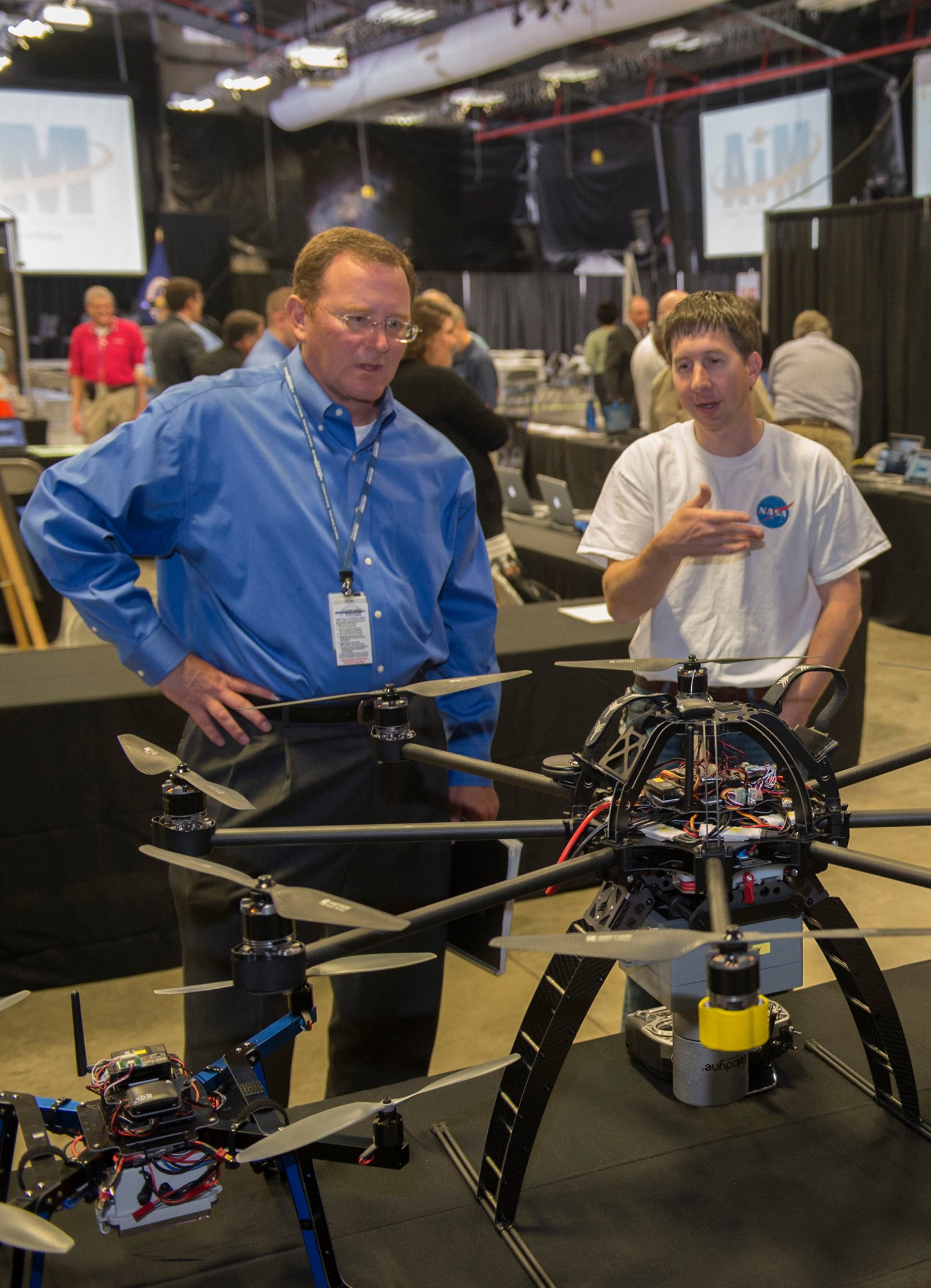
Andy Johnston, left, and Garrick Merrill, both of NASA Marshall Space Flight Center’s Engineering Directorate, discuss the Unmanned Aerial and Ground vehicles on display at an Agency Innovation Mission Day event hosted by the NASA FIRST 2016 Leadership Program Nov. 1. These vehicles can carry payloads up to 5 kilograms and were recently used to test sensors for unmanned landers and formation flying with five vehicles. Throughout the day, Marshall team members connected with each other and with other centers via an internal television network to learn about NASA technologies. The first of its kind, this agency-wide initiative served as an opportunity to capture and celebrate the innovation of all NASA’s employees. (NASA/MSFC/Emmett Given)
This Week in NASA History: STS-51A Launches to Deploy Two Satellites, Retrieve Two Others — Nov. 8, 1984
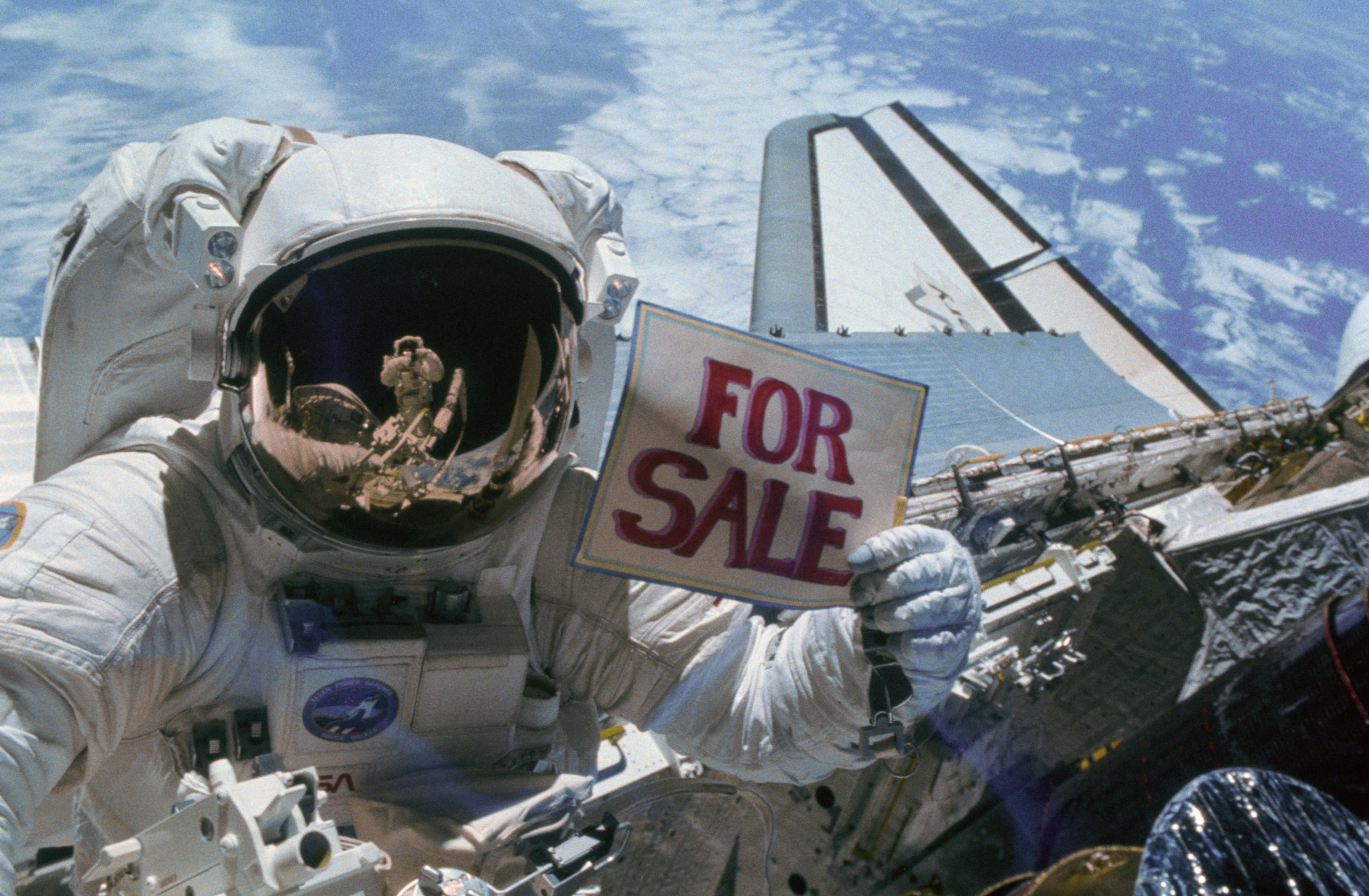
This week in 1984, space shuttle Discovery launched to deploy a pair of communication satellites and to retrieve two malfunctioning ones. In this photo, NASA astronaut Dale Gardner holds a “For Sale” sign after the retrieval of the malfunctioning satellites. The first shuttle mission launched in April 1981, and for the next 30 years the program’s five spacecraft carried people into orbit repeatedly, allowing crew to launch, recover and repair satellites, conduct cutting-edge research and build the largest structure in space, the International Space Station. The NASA History Program is responsible for generating, disseminating, and preserving NASA’s remarkable history and providing a comprehensive understanding of the institutional, cultural, social, political, economic, technological, and scientific aspects of NASA’s activities in aeronautics and space. For more pictures like this one and to connect to NASA’s history, visit the History Program’s webpage. (NASA)
Obituaries
Marcella S. Styles, 94, of Huntsville, died Oct. 30. She retired from the Marshall Center in 1975 as a program analyst.
Barry V. Guynes, 76, of Huntsville, died Nov. 3. He retired from the Marshall Center in 1995 as an aerospace engineer. He is survived by his wife, Charlene Rhodes Guynes.
Martha F. Scott, 79, of Huntsville, died Nov. 4. She retired from the Marshall Center in 1994 as an employee relations specialist. She is survived by her husband, Ron Scott.




























